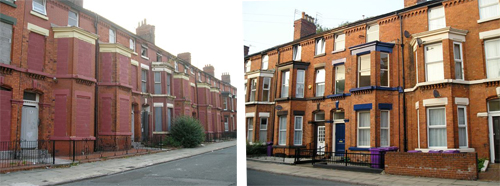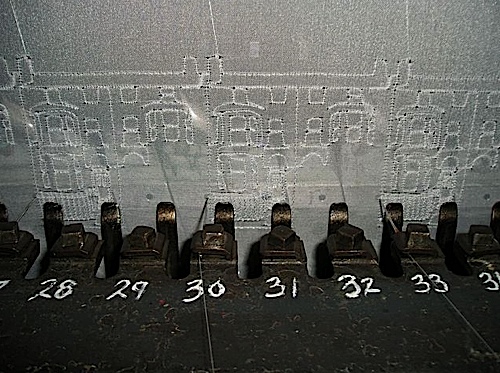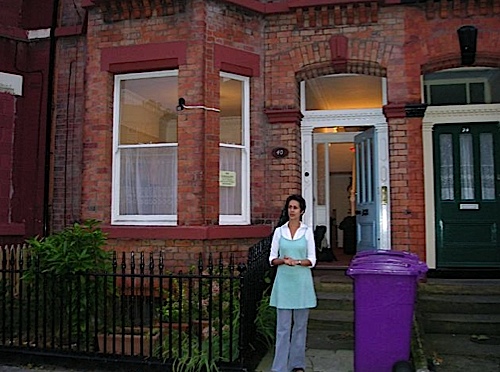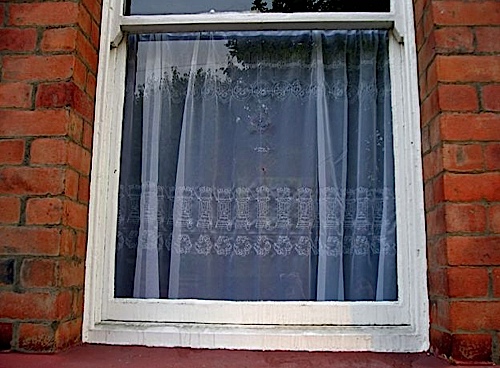Following our earlier post introducing the Mechanical Drawing exhibition, we would like to offer a closer look at one of the most interesting exhibits. The following text is from the exhibition catalogue courtesy of Melanie Miller:
Â
“The schiffli machine at MMU is allegedly obsolete, an allegation also levelled at some 200,000 pre-war terraced houses including my home. This coincidence stimulated investigation of the present and future uses for both the schiffli and the terraced house, by using each to articulate the other.â€
Â
Â
The net curtain is a specific and loaded textile form, which can be viewed as a signifier of the identity and values of residents. Along with the front step, door furniture and front gardens it presents the outward face of the home to the world. The net curtain seeks privacy for the inhabitants yet, particularly in the case of back of pavement terraces, this can only be achieved with the co-operation of passers by. You can look right through a net curtain if you get close enough to it, thus privacy is given by people on the street outside when nets give the signal ‘don’t look in’.
Â
 Â
Â
Â
The proposed demolition of 472 terraced houses in the Welsh Streets of Liverpool has been marked by community fracture, national controversy and a complete loss of privacy to residents. The family size, income, occupation, health, age, tenure, and aspiration of each household has become common knowledge. Net curtains have been replaced with tin sheet as occupation is replaced with vacancy. Hence the net curtain was designed, embellished with four narrative images and the text: ‘Nothing Is Private’. Reading from top to bottom are: street, no bulldozers, recycle the houses, and front door, all rendered as continual repeat pattern in the net tradition of the terraces. Since the images are rendered small, close and repeatedly they read as patterns, until close examination reveals their content.
Â
Although produced for the ‘Mechanical Drawing’ exhibition, the work’s real context is the front window of the terraced house at 40 Kelvin Grove in Toxteth, where it was previewed for Liverpool Independents Biennial 06. As people passed the window a light was triggered, revealing the interior, the curtain and the occupants of the living room. “Nothing is Private†thus exposed both the ruthless process of land acquisition and the delicacy of production possible on the schiffli machine.
Â
Â
Thus a mechanical drawing device has been used as a tool of communication in a war of information. Interest in new and longstanding uses of both the machine and the houses has developed amongst audiences to date. The work poses the idea that nothing is obsolete until people stop using it; by choice and not by compulsion.
Â
 Â
Â



The schiffli machine is extremely interesting.